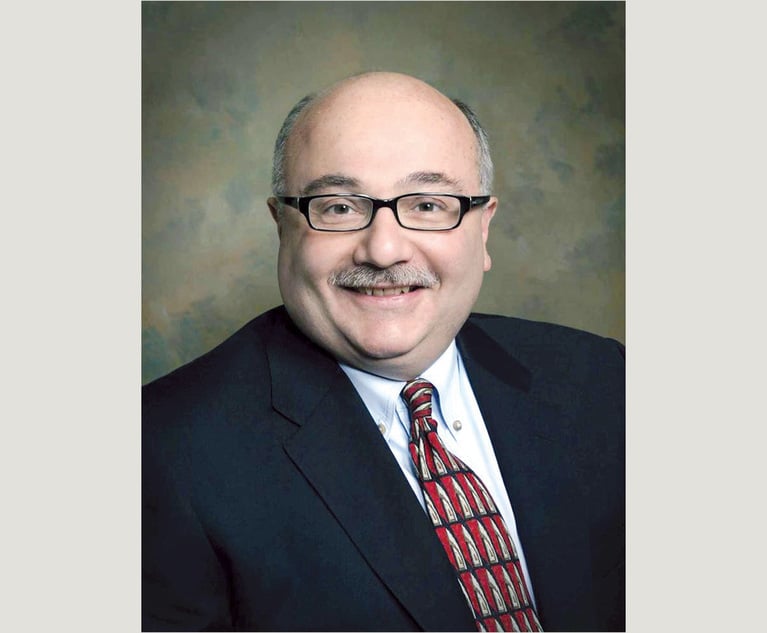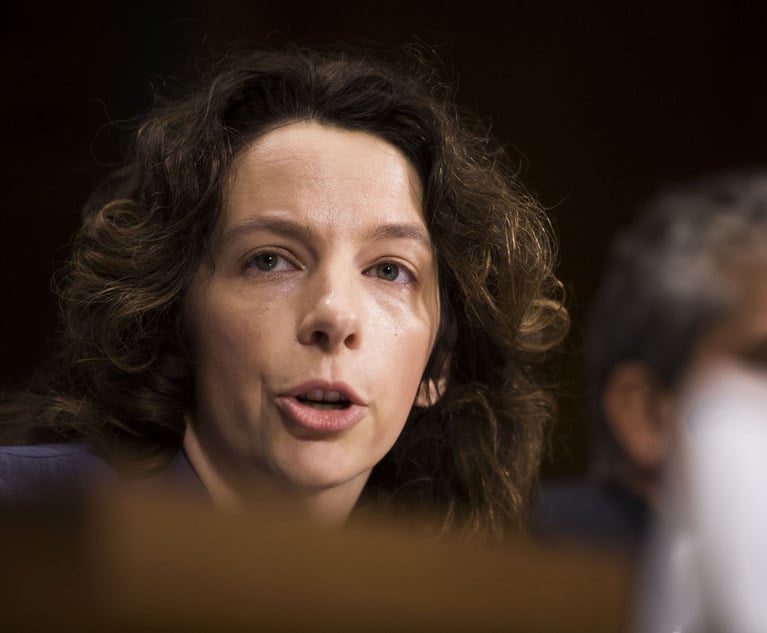Truth, Lies and Videotapes
Whether videos are from security surveillance cameras maintained by a party to the litigation, or a neighboring property or business, municipal traffic cameras, or dashboard videos from nearby vehicles, they can override the usual issues of party or witness credibility and substantially impact the assessment of liability.
November 22, 2021 at 12:00 PM
12 minute read
 There is an old adage that one picture is worth a thousand words. This is aptly applied to the impact a video depiction of an accident may have in a personal injury action. Such footage may accurately record an event where, because of the emotional and physical turmoil at the moment of an accident, the perception of witnesses and participants may be less than a completely accurate recollection of the details of what occurred. A video which memorializes the moment will likely supersede the recollections of the human mind. Where there are such videos, it is important to seek them out and examine them, as their impact can be enormous.
There is an old adage that one picture is worth a thousand words. This is aptly applied to the impact a video depiction of an accident may have in a personal injury action. Such footage may accurately record an event where, because of the emotional and physical turmoil at the moment of an accident, the perception of witnesses and participants may be less than a completely accurate recollection of the details of what occurred. A video which memorializes the moment will likely supersede the recollections of the human mind. Where there are such videos, it is important to seek them out and examine them, as their impact can be enormous.
Whether the videos are from security surveillance cameras maintained by a party to the litigation, or a neighboring property or business, municipal traffic cameras, or dashboard videos from nearby vehicles, they can override the usual issues of party or witness credibility and substantially impact the assessment of liability. If there is a video of the event, it is important to identify it, make sure it is preserved, and, if possible, obtain a copy before your client or an important eyewitness testifies. The witness's recollection of the event may differ in details large or small from an authenticated, unedited video. Once the footage is obtained, the issue of whether it is or can be properly authenticated is essential, whether you want to use it or eliminate it.
Prompt investigation is essential. Frequently, commercial sites or residential buildings will have installed security cameras which may be monitored by building personnel for undesirable activity on the site, and footage maintained for varying lengths of time before the cameras record over existing data. If there is even a suspicion that there is such footage in the possession of an adverse party, it is important to place the party on notice as early as possible and with as broad a demand as possible to preserve such surveillance footage, hopefully before the camera records over the footage. If a party is on notice of potential litigation, it may keep the footage on its own initiative, as part of a post-accident protocol imposed by its insurance carrier, but it may not preserve the extensive portions of the tape which may be warranted by the particular event. For example, in a case where it is necessary to show actual or constructive notice, the events leading up to the accident may not be automatically retained and the brief snippet of the accident may be insufficient to prove notice.
This content has been archived. It is available through our partners, LexisNexis® and Bloomberg Law.
To view this content, please continue to their sites.
Not a Lexis Subscriber?
Subscribe Now
Not a Bloomberg Law Subscriber?
Subscribe Now
NOT FOR REPRINT
© 2024 ALM Global, LLC, All Rights Reserved. Request academic re-use from www.copyright.com. All other uses, submit a request to [email protected]. For more information visit Asset & Logo Licensing.
You Might Like
View All
Decision of the Day: District Judge Vacates Magistrate's Ruling to Disqualify Prosecutors in Kidnapping Case


Decision of the Day: Judge Precludes Ballistics Expert's Opinion on Scene for 2016 Fatal Police Shooting
Law Firms Mentioned
Trending Stories
- 1Call for Nominations: Elite Trial Lawyers 2025
- 2Senate Judiciary Dems Release Report on Supreme Court Ethics
- 3Senate Confirms Last 2 of Biden's California Judicial Nominees
- 4Morrison & Foerster Doles Out Year-End and Special Bonuses, Raises Base Compensation for Associates
- 5Tom Girardi to Surrender to Federal Authorities on Jan. 7
Who Got The Work
Michael G. Bongiorno, Andrew Scott Dulberg and Elizabeth E. Driscoll from Wilmer Cutler Pickering Hale and Dorr have stepped in to represent Symbotic Inc., an A.I.-enabled technology platform that focuses on increasing supply chain efficiency, and other defendants in a pending shareholder derivative lawsuit. The case, filed Oct. 2 in Massachusetts District Court by the Brown Law Firm on behalf of Stephen Austen, accuses certain officers and directors of misleading investors in regard to Symbotic's potential for margin growth by failing to disclose that the company was not equipped to timely deploy its systems or manage expenses through project delays. The case, assigned to U.S. District Judge Nathaniel M. Gorton, is 1:24-cv-12522, Austen v. Cohen et al.
Who Got The Work
Edmund Polubinski and Marie Killmond of Davis Polk & Wardwell have entered appearances for data platform software development company MongoDB and other defendants in a pending shareholder derivative lawsuit. The action, filed Oct. 7 in New York Southern District Court by the Brown Law Firm, accuses the company's directors and/or officers of falsely expressing confidence in the company’s restructuring of its sales incentive plan and downplaying the severity of decreases in its upfront commitments. The case is 1:24-cv-07594, Roy v. Ittycheria et al.
Who Got The Work
Amy O. Bruchs and Kurt F. Ellison of Michael Best & Friedrich have entered appearances for Epic Systems Corp. in a pending employment discrimination lawsuit. The suit was filed Sept. 7 in Wisconsin Western District Court by Levine Eisberner LLC and Siri & Glimstad on behalf of a project manager who claims that he was wrongfully terminated after applying for a religious exemption to the defendant's COVID-19 vaccine mandate. The case, assigned to U.S. Magistrate Judge Anita Marie Boor, is 3:24-cv-00630, Secker, Nathan v. Epic Systems Corporation.
Who Got The Work
David X. Sullivan, Thomas J. Finn and Gregory A. Hall from McCarter & English have entered appearances for Sunrun Installation Services in a pending civil rights lawsuit. The complaint was filed Sept. 4 in Connecticut District Court by attorney Robert M. Berke on behalf of former employee George Edward Steins, who was arrested and charged with employing an unregistered home improvement salesperson. The complaint alleges that had Sunrun informed the Connecticut Department of Consumer Protection that the plaintiff's employment had ended in 2017 and that he no longer held Sunrun's home improvement contractor license, he would not have been hit with charges, which were dismissed in May 2024. The case, assigned to U.S. District Judge Jeffrey A. Meyer, is 3:24-cv-01423, Steins v. Sunrun, Inc. et al.
Who Got The Work
Greenberg Traurig shareholder Joshua L. Raskin has entered an appearance for boohoo.com UK Ltd. in a pending patent infringement lawsuit. The suit, filed Sept. 3 in Texas Eastern District Court by Rozier Hardt McDonough on behalf of Alto Dynamics, asserts five patents related to an online shopping platform. The case, assigned to U.S. District Judge Rodney Gilstrap, is 2:24-cv-00719, Alto Dynamics, LLC v. boohoo.com UK Limited.
Featured Firms
Law Offices of Gary Martin Hays & Associates, P.C.
(470) 294-1674
Law Offices of Mark E. Salomone
(857) 444-6468
Smith & Hassler
(713) 739-1250







